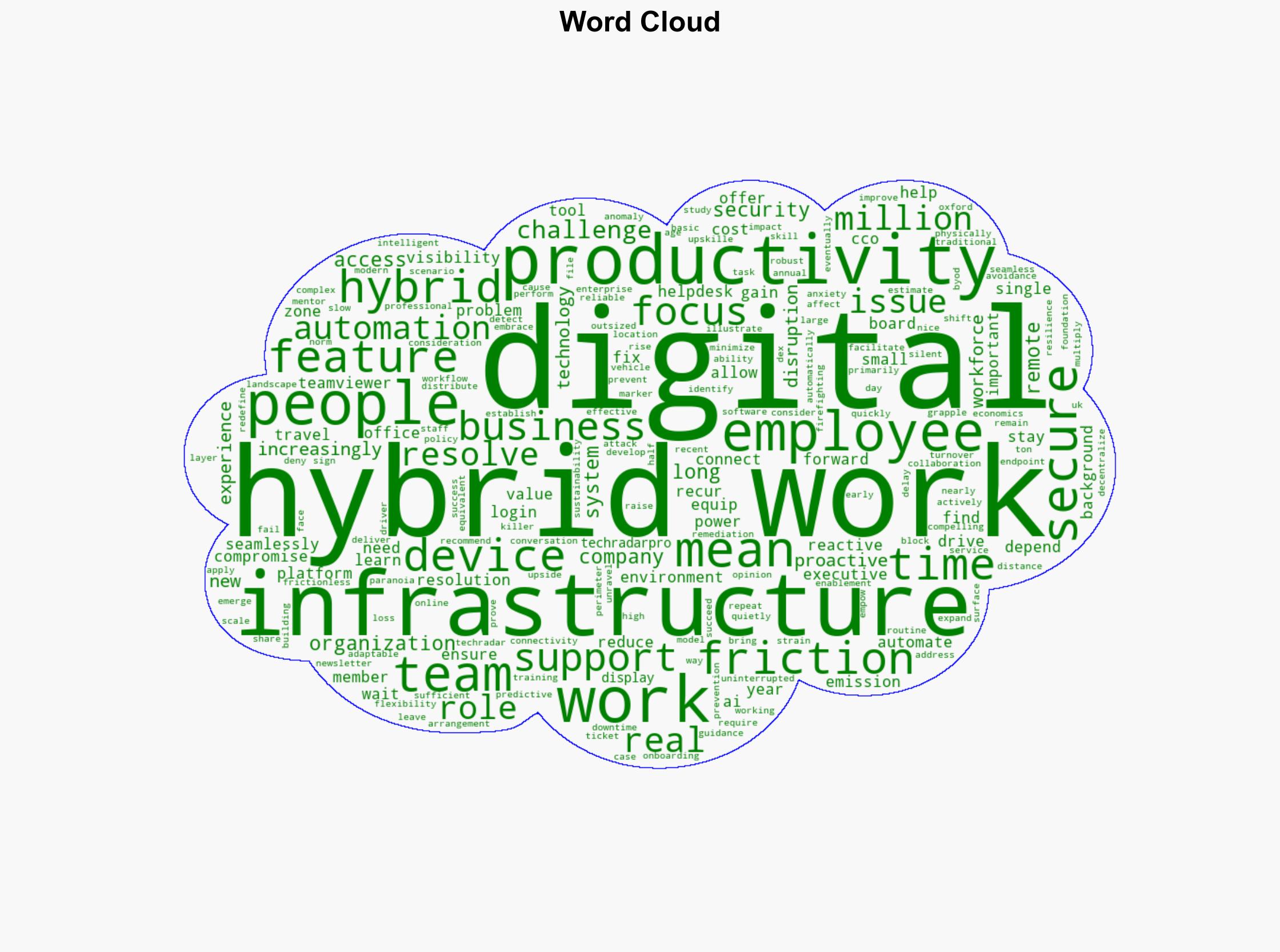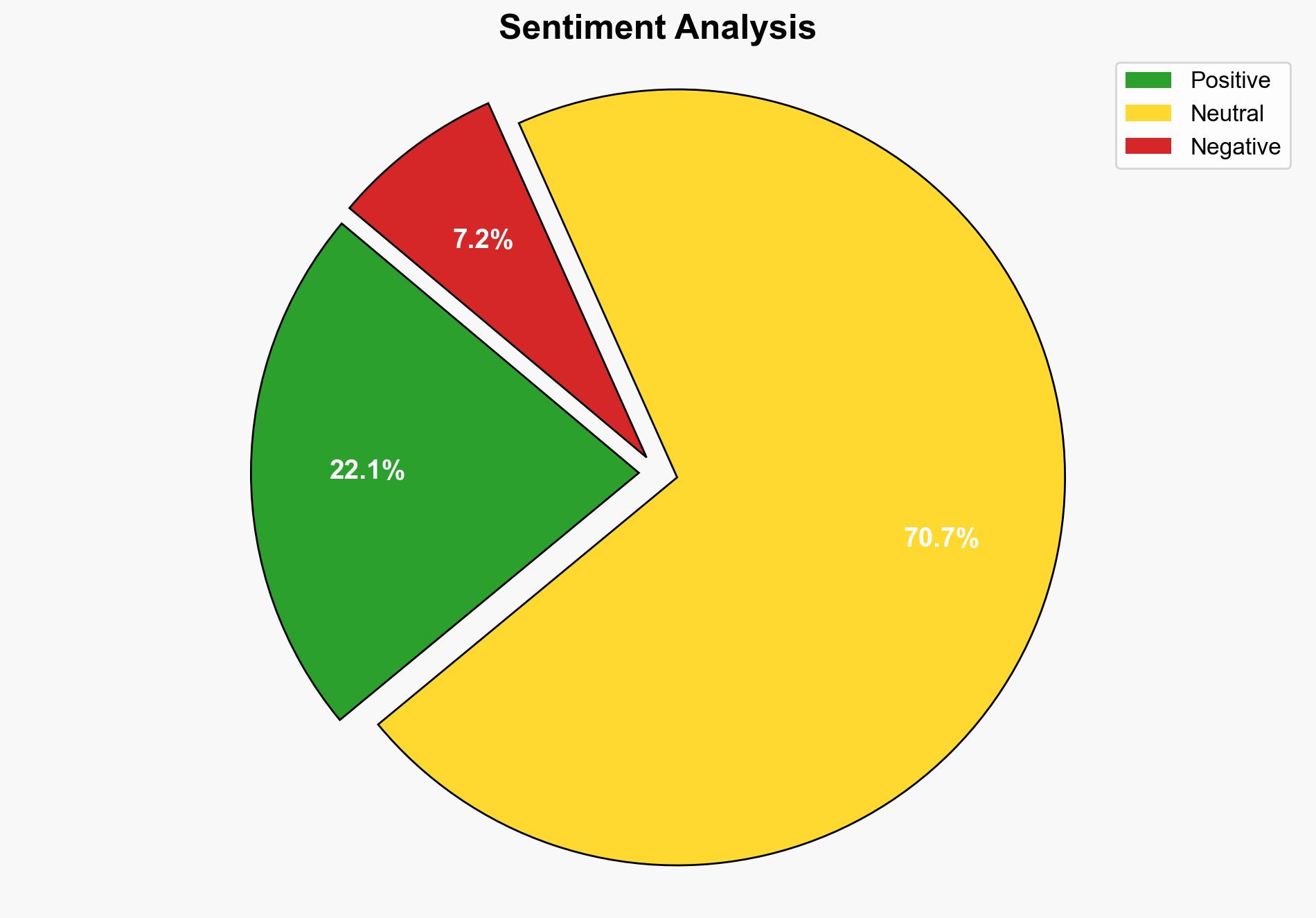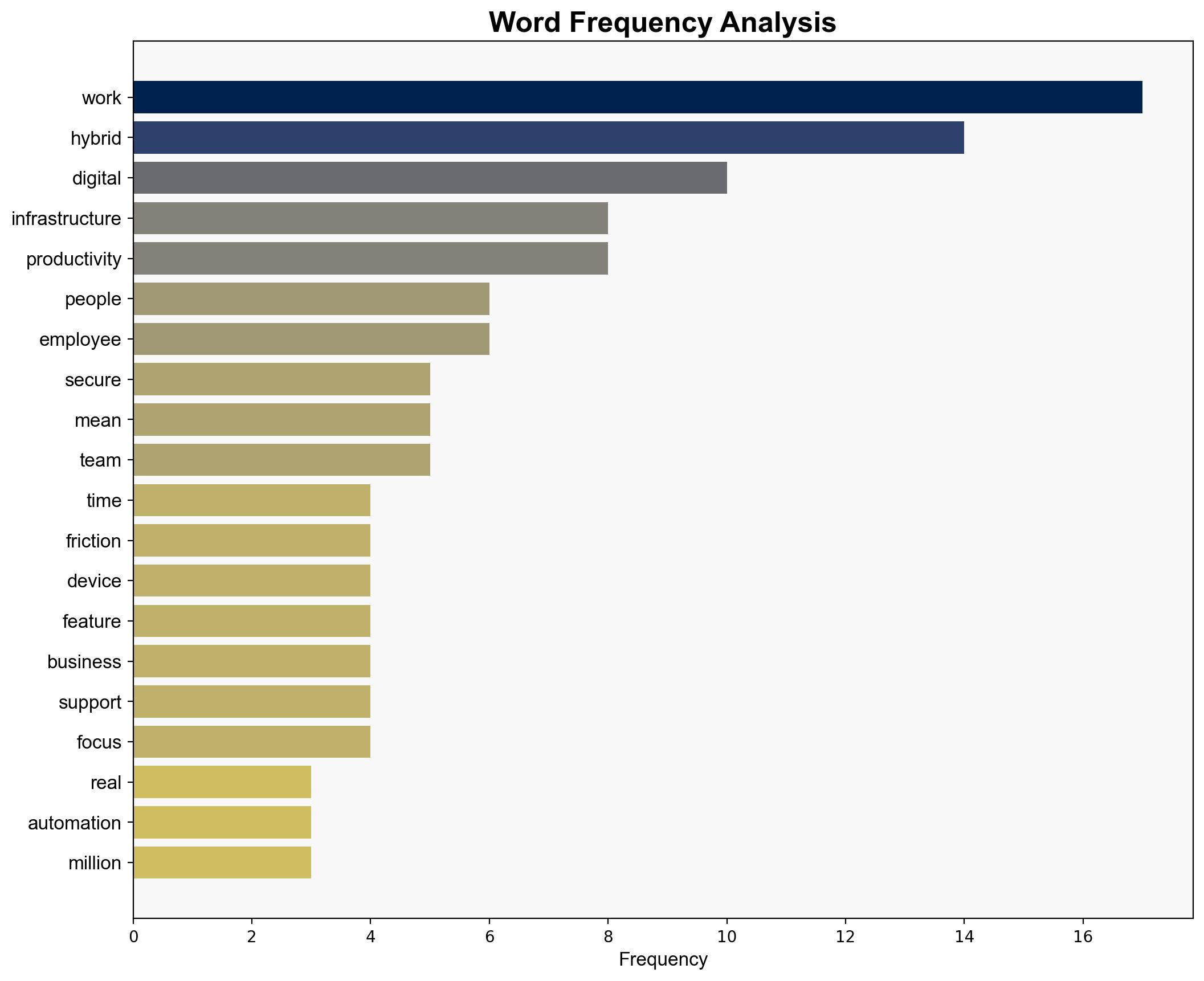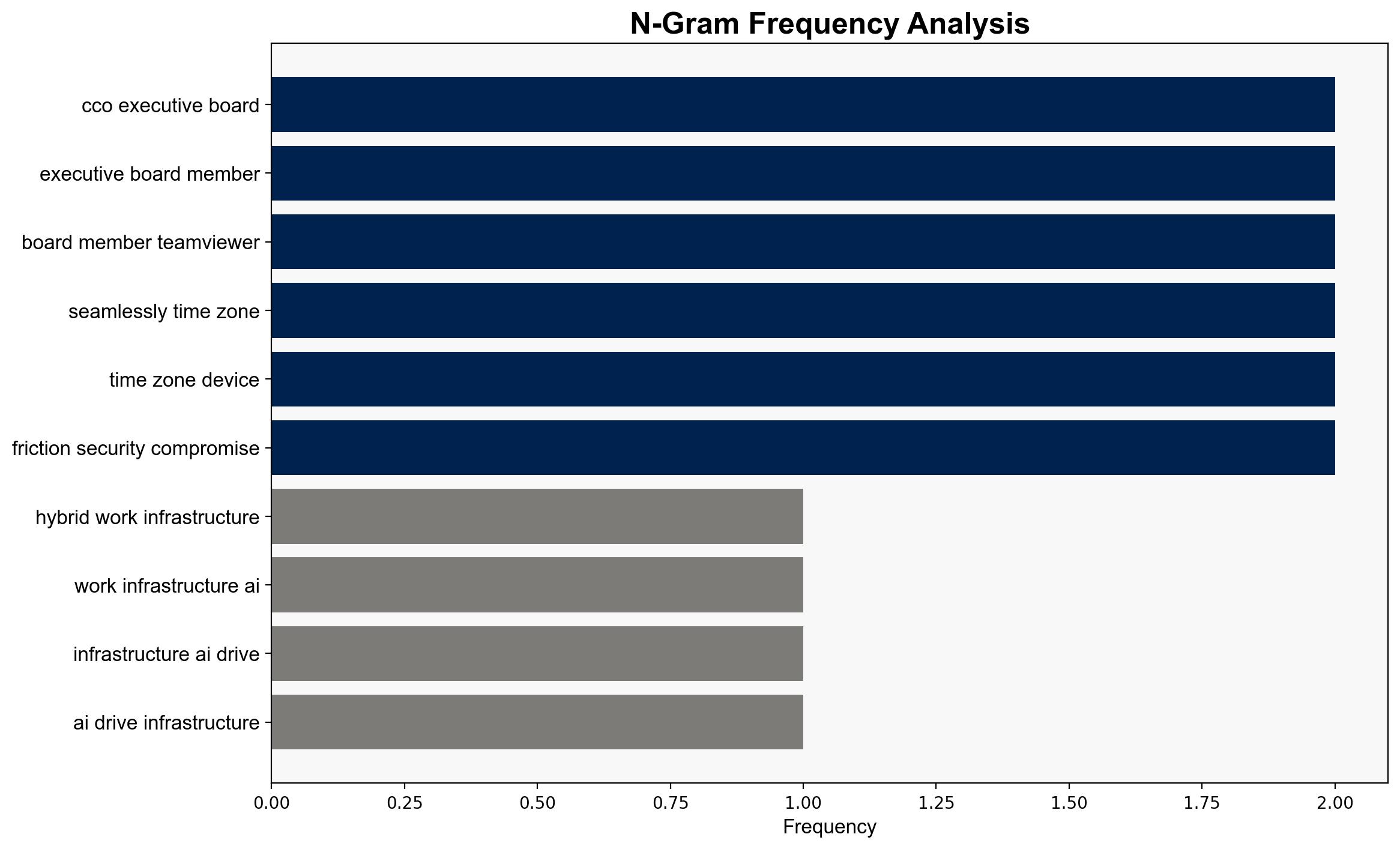Hybrid work is here – but is the infrastructure – TechRadar
Published on: 2025-10-24
Intelligence Report: Hybrid work is here – but is the infrastructure – TechRadar
1. BLUF (Bottom Line Up Front)
The strategic judgment indicates a moderate confidence level that the current hybrid work infrastructure is insufficiently robust to fully support seamless and secure operations. The most supported hypothesis suggests that while hybrid work is becoming a norm, infrastructure gaps pose significant productivity risks. Recommended action includes prioritizing investment in automation and security enhancements to address these gaps.
2. Competing Hypotheses
1. **Hypothesis A**: The existing infrastructure is adequate for hybrid work, but requires minor adjustments to optimize productivity and security.
2. **Hypothesis B**: The current infrastructure is inadequate, necessitating significant upgrades and investments in automation and security to prevent productivity losses.
Using ACH 2.0, Hypothesis B is better supported by the evidence, which highlights ongoing productivity issues and security concerns as critical challenges in hybrid work environments.
3. Key Assumptions and Red Flags
– **Assumptions**: Both hypotheses assume that hybrid work will remain a dominant model. Hypothesis A assumes that existing infrastructure can be optimized without major overhauls.
– **Red Flags**: The source lacks specific data on the extent of productivity losses and security breaches, which could indicate an underestimation of the problem’s severity.
– **Blind Spots**: Potential over-reliance on automation without considering human factors in workflow adaptation.
4. Implications and Strategic Risks
– **Economic**: Insufficient infrastructure could lead to significant productivity losses, impacting organizational profitability.
– **Cyber**: Increased reliance on digital platforms heightens vulnerability to cyber threats.
– **Geopolitical**: Variations in infrastructure capabilities across regions could create competitive disadvantages.
– **Psychological**: Employee frustration due to digital friction may increase turnover rates, exacerbating workforce instability.
5. Recommendations and Outlook
- Invest in comprehensive infrastructure upgrades focusing on automation and security to mitigate productivity risks.
- Implement proactive monitoring and predictive support systems to preemptively address potential disruptions.
- Scenario Projections:
- **Best Case**: Seamless integration of new technologies enhances productivity and security, leading to competitive advantages.
- **Worst Case**: Failure to upgrade infrastructure results in significant productivity losses and increased security breaches.
- **Most Likely**: Gradual improvements in infrastructure lead to moderate productivity gains and reduced security risks.
6. Key Individuals and Entities
No specific individuals are mentioned by name in the source text. Key entities include Oxford Economics and TeamViewer, which provide insights into the economic impact and technological solutions, respectively.
7. Thematic Tags
national security threats, cybersecurity, digital transformation, workforce productivity





